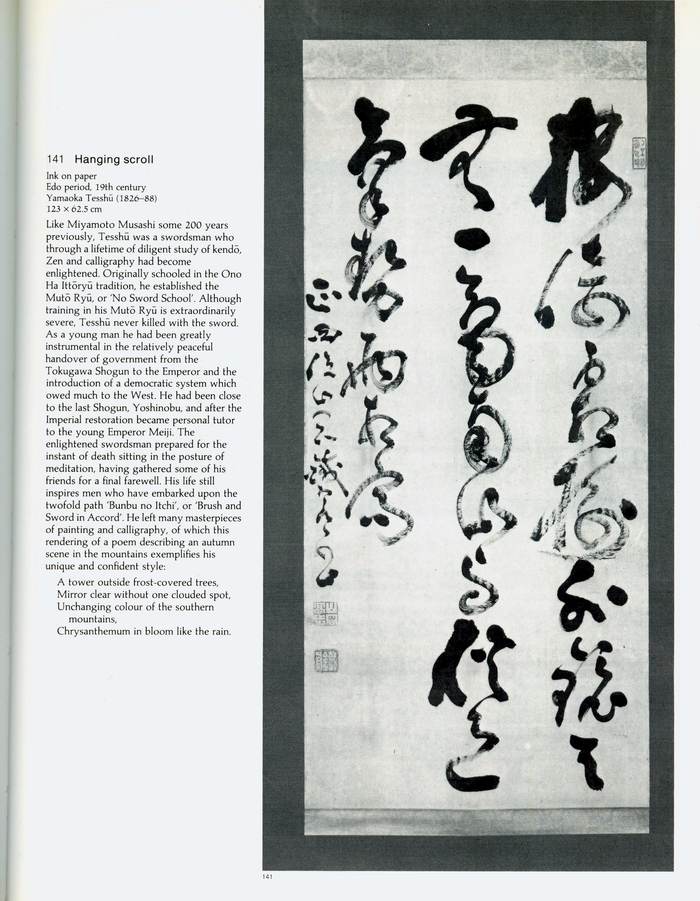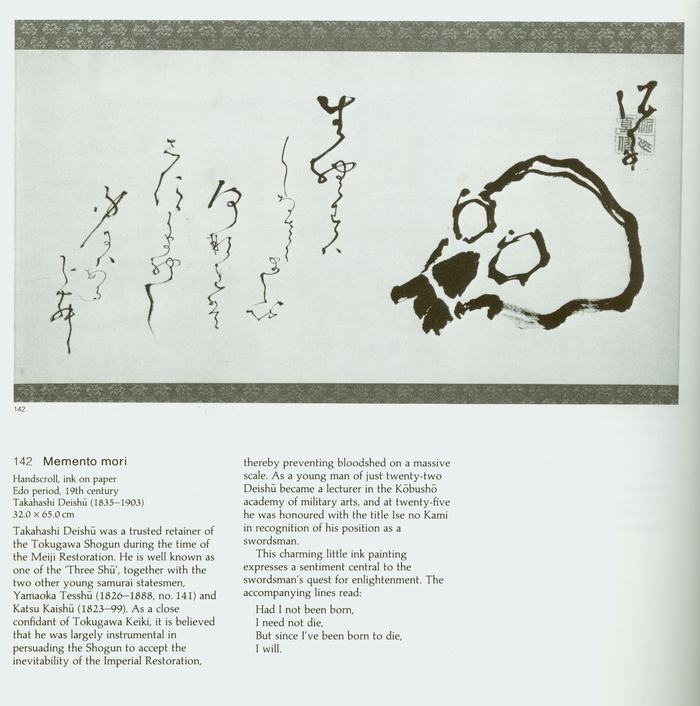A Fine Calligraphy
by
Yamaoka Tesshu
Yamaoka Tesshu was born on June 10th, 1836 and
passed away at the age of fifty-three on July 19th 1888. He was a man of immense
and special character and excelled in many disciplines. He became a famous
Buddhist, calligrapher, swordsman, statesman, and philanthropist. He
began his studies of swordsmanship at the age of 9 learning kendo
in the Shinkage Ryu Tradition. He became very renowned for his skill
with the sword and later is his life he developed his own system of
fencing. This is the famous "Muto-Ryu" or "no sword"
school. Much in the same manner as Minamoto Musashi, he reached
enlightenment through his dedication to Zen, Calligraphy and
swordsmanship.
In addition to his accomplishments as a swordsman, Tesshu had a hand in the modernization of Japan and
became very instrumental in the introduction of Japan to the modern world.
He was directly retained by Emperor Meji and had been an advisor to the Tokugawa government before the restoration. He was the
negotiator with Saigo Takamori during the civil uprisings that followed the Meji
restoration when Takamori rebelled against the new government. Tesshu
helped arrange the peaceful surrender of Edo Castle, saving many lives on both
sides.
For additional information on the life and
accomplishments of Yamaoka Tesshu please click here
As a master of calligraphy, Tesshu is know as one
of the "Bakumatsu no sanshu" also called the "three shu". This group
consists of three famous artists. They are Yamaoka Tesshu (d 1888), Katsu
Kaishu (d 1899) & Takahasi Deishu (d 1903).
This calligraphy is over 6 feet tall and is in excellent condition. It comes with a lovely custom made storage box stating the name of artist on the lid with built in support arches that the ivory rollers rest upon.
This calligraphy states, "The mountains are dyed to
many colors quietly". The meaning can be interpreted to guide us to accept
change with grace but can also show us that change is inevitable and will happen
no matter how we enforce our will. This meaning fits strongly into
the political climate of Tesshu's later years and the method of his
successes.
The strength and intuitive nature of the brush work in this work is outstanding. The quick skillful brush work creates the "flying white" affect that was first introduced by the famous Chinese calligapher, Cai Yong, during the East Han Dynasty 206BC - AD9. Please look at the area between the stokes were only the very tip of the brush is touching the paper and creates fine / broken lines. This use of negative space creates the flying white style. The strength of the strokes versus the passive nature of the meaning
creates a powerful irony.
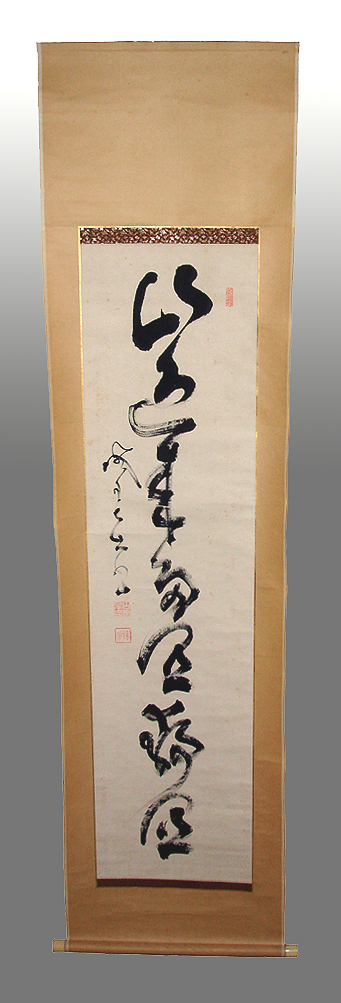

|

|
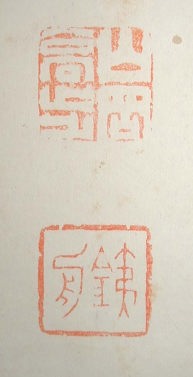
|
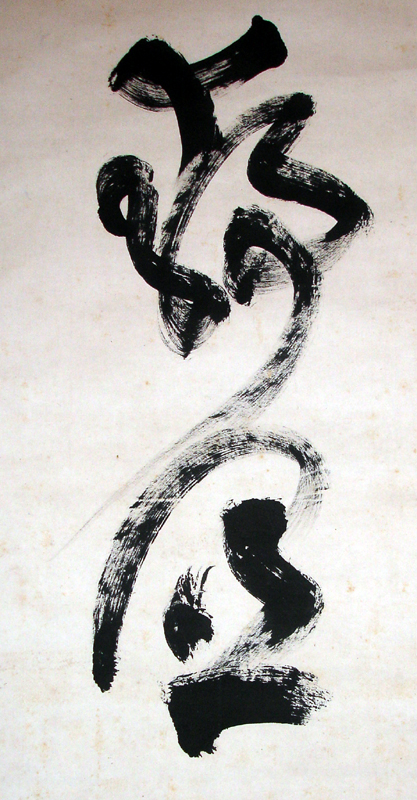
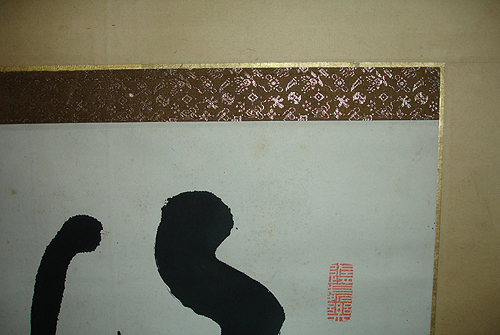

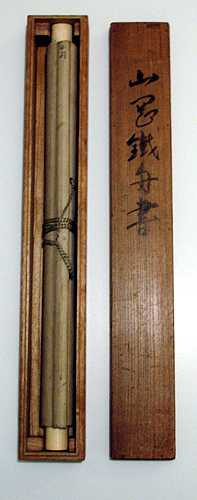
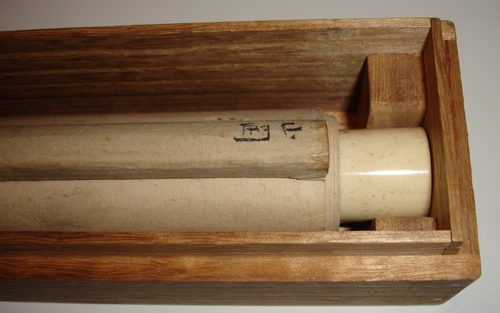
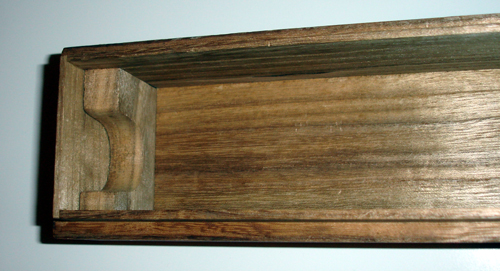
Reference photos from Swords of the Samurai by Victor Harris and Nobuo Ogasawara.
